DBKitsuma Coil Complete 100 Hour Service Instructions (Part 1 of 4)
Mar 2022 orig., Jul 2023 rev.
Table of Contents
Recommendations and Warnings
Cane Creek recommends only trained suspension technicians perform service on all suspension, using all required tools and following all proper procedures. Anyone without access to the proper equipment or with any concerns on the procedures should defer to an authorized Cane Creek service center for service. Improper service can result in loss of performance or suspension failure. All Cane Creek shocks have pressurized nitrogen and oil, even coil shocks. Follow the service procedures exactly as written to avoid possible injury or harm to the suspension. Always wear eye protection while performing suspension service.
Please dispose of all waste products and materials through proper channels to avoid contamination of the environment.
Any damage or issues resulting from improper service will not be covered by warranty. If you have a shock still in its original warranty period and do not wish to void your warranty, please contact an authorized Cane Creek service center.
These service instructions cover the basic service procedures using standard service kits. If your suspension requires parts beyond standard replacement parts – shaft, damper tubes, end eyes – please consult your authorized Cane Creek service center or contact us at our Cane Creek Support Center.
Service Notes
The Kitsuma Air and Coil share many service steps. Additionally, the Standard and Trunnion variants of both models have identical service procedures other than where to clamp the cylinder head. Some images in these instructions may not be identical to the valve body or outer damper tube on the Kitsuma Air, but process is the same for the shock in the image and the shock on your bench.
Service Kits
BCD0338-01 – Kitsuma Coil Complete Rebuild Kit (w/ Bladder)
BCD0169 – Bladder Res End Cap (if replacing older IFP system)
Required Cane Creek Tools
ACD0354 – Bladder Res End Fill Tool
DBT018 – DB Seal Head Pin Spanner Wrench
AAD1361-01 – DBCoil/ DBAir – Oil Fill Needle Adapter
DBT016 – DB Gas Fill Needle
AAD0555 – 8mm & 9.5mm Shaft Clamp
AAD2465 – Kitsuma Valve Seat Tool
ACD0322 – Kitsuma Low Speed Detent Funnel
BAD1298 – DB 9.5mm Shaft Bullet
DBT012 – DB IFP Setting Tool
Additional Tools & Supplies
Torx wrenches – T10 & T20
Sockets – 4, 8 & 13mm
9.5mm Shaft Bullet
Torque wrenchesKnipex pliers
Pick
Strap wrench
Suspension Grease
PolyLube Grease
Motorex 4wt Racing Fork Oil
Vacuum Oil Fill Machine
Nitrogen Fill System
Torque, Loctite, Oil & Nitrogen Specs
Torque & Loctite Chart
| Part | Torque Spec | Loctite Spec |
|---|---|---|
| Shaft Nut | 14.5 Nm | 243 (Blue) |
| Outer Damper Tube | Tight | 263 (Red) |
| Valve Seat | 4.8 Nm | None |
| High Speed Adjuster | 7 Nm | None |
| Climb Switch Screw | 1.2 Nm | 243 (Blue) |
| Oil Seal Head | 22 Nm | None |
| End Eye | 14.5 Nm | 243 (Blue) |
Oil Chart
| Oil Location | Oil Type | Oil Amount |
|---|---|---|
| Damper Fill | Motorex 4wt Racing Fork Oil | Fill to 3 Bars |
Nitrogen Chart
| Nitrogen Location | Nitrogen Pressure |
|---|---|
| Valve Body | 11 - 12 Bars |
Related Technical Service Bulletins
Review all related TSBs before performing any service.
TSB038 – Kitsuma HSR Revalve
TSB039 – Kitsuma High Speed Cap (ACD0275) Loctite Removal from Installation
TSB040 – Kitsuma Coil Endeye Material Change
TSB043 – Kitsuma Coil Shaft Lengthened & Washer Added
TSB045 – Kitsuma IFP Changed to Bladder
TSB048 – Kitsuma Oil Seal Head Torque Valve
General Prep








Clean shock. Record tune if desired. Remove hardware. Remove bushings if replacing. Remove valve cap. Bleed air from shock using shock pump. Be sure to depressurize shock slowly to avoid trapping air in the negative chamber.

Hardware Removed

Unthreading Preloader 1

Unthreading Preloader 2

Spring Clip

Spring Clip Removal

Spring Removal

Stroke Reduction Clip

Stroke Reduction Clip Removed
Damper Disassembly







Step 1 – Nitrogen Bleed & Oil Removal
***Use caution as nitrogen is pressurized.***
Remove reservoir end cap screw using T20. Remove and discard o-ring. Use gas fill needle to bleed nitrogen from reservoir tube. Remove oil fill screw with T20. Cycle the shaft to remove as much oil as possible from the damper. Dispose of oil properly.
Always use extreme caution when using a pick in this step or others to avoid scratching metal parts. Failure to do this can create scratches in the o-ring glands which cause leak paths for oil or gas. When possible, pinch and remove o-rings rather than using a pick.

Clamped in Soft Jawed Vise

Red End Cap Fill Screw Removal

Red End Cap Fill Screw Removed

Red End Cap Fill Screw O-Ring Removed

Bleeding Nitrogen

Oil Fill Screw Removal

Oil Drain




Step 2 – Oil Seal Head & Shaft Removal
Clamp valve body into vise. Using Seal Head Pin Spanner Wrench (DBT018), loosen and remove oil seal head and shaft assembly.

Inserting Oil Seal Head Spanner

Oil Seal Head Spanner Seated

Freeing Oil Seal Head

Shaft Assembly Removed

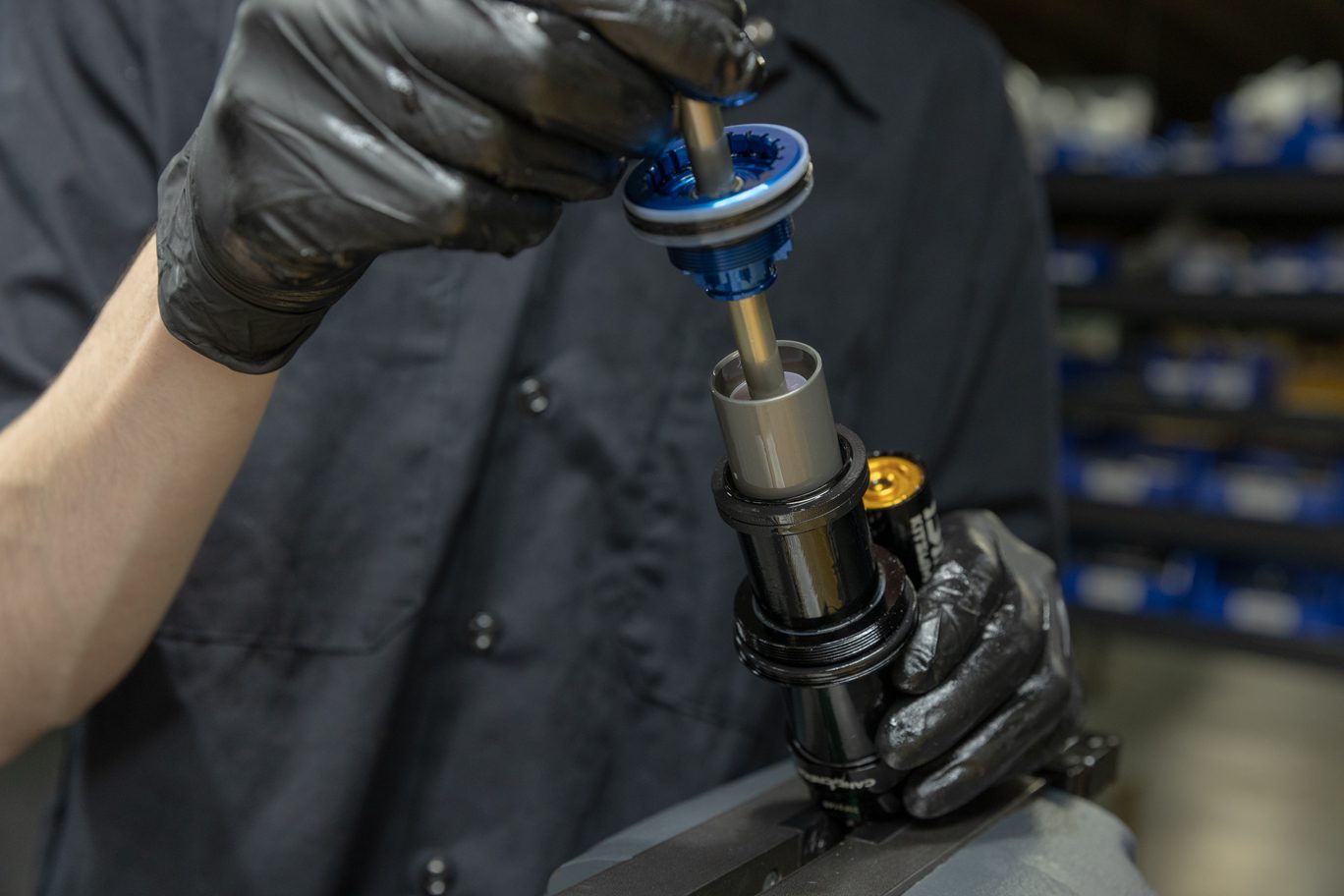
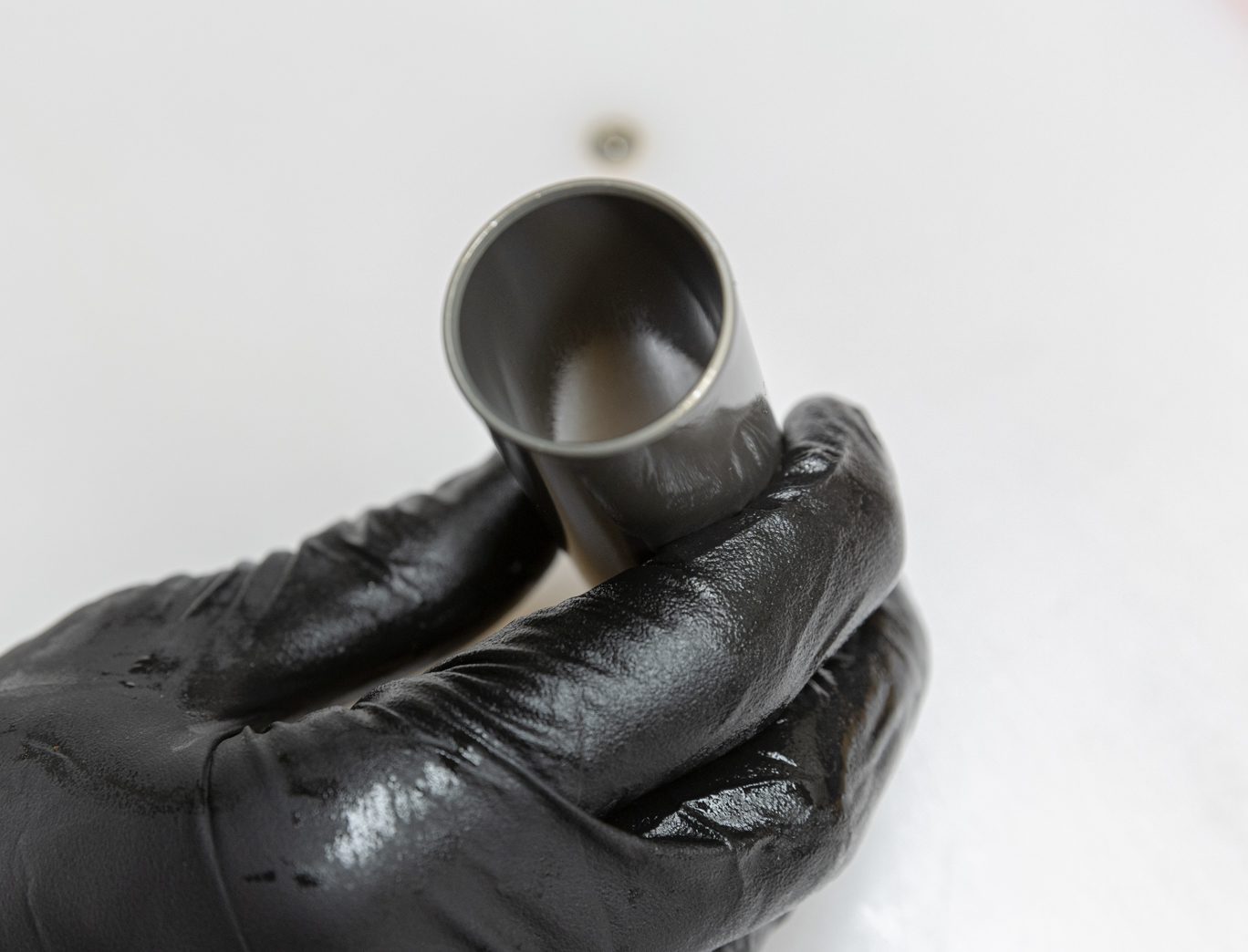
Step 3 – Inner Damper Tube Removal
Inner damper tube should come out with air piston. If not, reinstall piston and use rotational movement to free damper tube. Inspect inner damper tube for piston wear. Replace if necessary.

Inserting Air Piston

Removing Inner Damper Tube w/ Air Piston

Inspecting Inner Damper Tube









Step 4a – IFP Removal
Using IFP tool (DBT012), press cap into the reservoir tube exposing circlip. Press on circlip to remove from channel. Pick should not be required but could be used if needed. Thread IFP tool back into end cap, remove and discard. Thread IFP tool into metal IFP and remove from reservoir tube. Use adaptor for plastic IFP. Discard IFP.
TSB045 – Kitsuma IFP Changed to Bladder

Threading IFP Tool onto Res End Cap

Depressing Res End Cap

Freeing Res End Cap Circlip

Res End Cap Circlip Removed

Res End Cap Removed

Old IFPs, Metal vs. Plastic

Metal IFP Removal

Adapter for Removing Plastic IFP

Plastic IFP Removal
OR
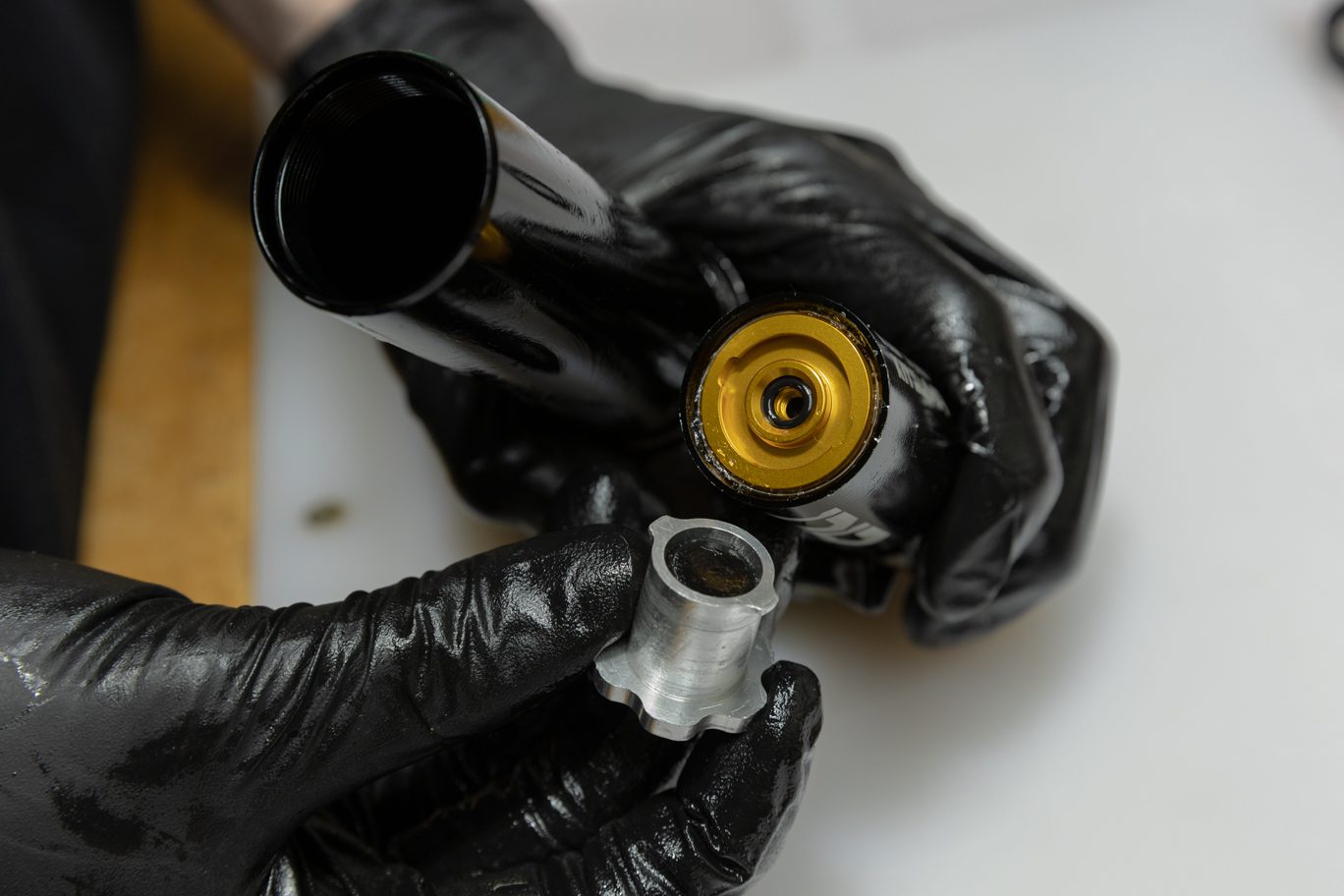





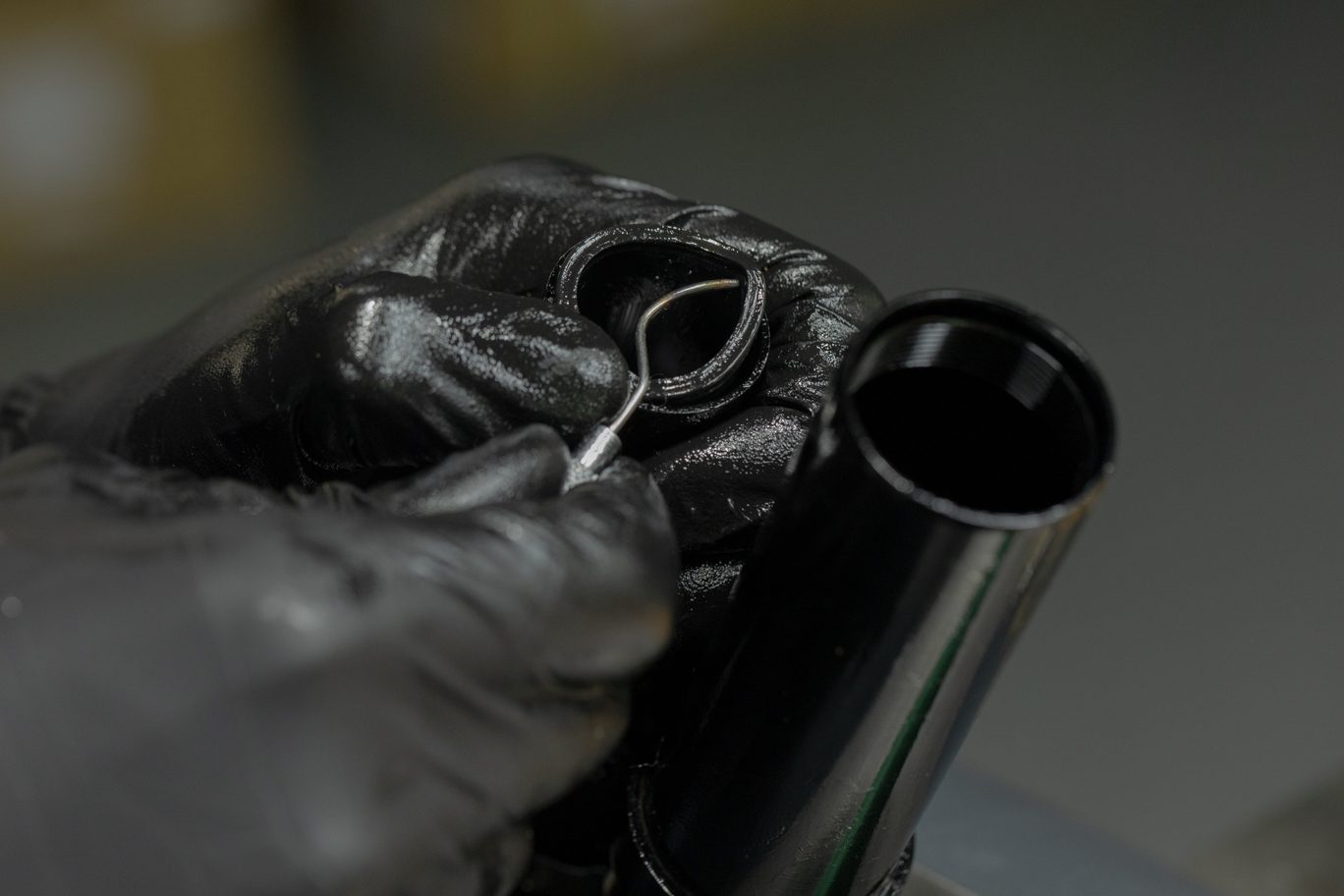

Step 4b – Bladder Removal
Using bladder setting tool (ACD0354), press res end cap into reservoir, exposing circlip. Press on circlip to remove from channel. Pick should not be required but could be used if needed. Use IFP setting tool (DBT012) to pull end cap out of reservoir tube. If bladder does not come out with end cap, remove with pick.
TSB045 – Kitsuma IFP Changed to Bladder

Bladder Setting Tool

Bladder Setting Tool Attached to End Cap

Depressing End Cap

Freeing End Cap Circlip

End Cap Circlip Removed

Res End Cap Removed

Bladder Removal

Bladder Removed





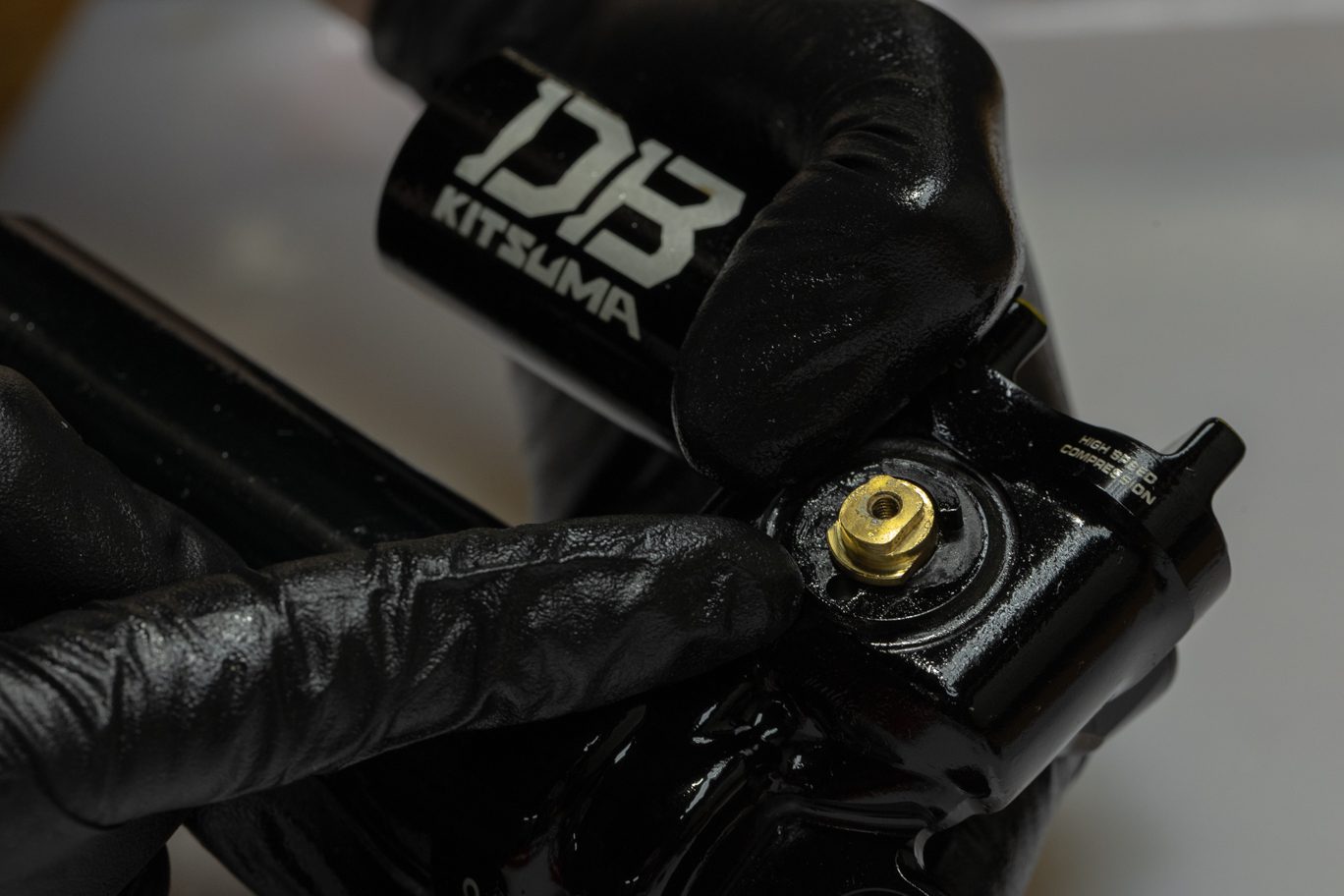



Step 5 – Climb Switch & Spool Valve Removal
Using T10, remove Climb Switch mounting screw. Remove Climb Switch. Remove and discard Climb Switch o-ring. Remove CS detent. Turn CS valve so that the tab on the spool valve is no longer engaged with the valve body and remove assembly. Pinch & remove and discard spool valve o-ring.

Climb Switch Mounting Screw Removal

Climb Switch Removal

Climb Switch O-Ring Removal

Climb Switch O-Ring Removed

Climb Switch Detent Removal

Aligning Spool Valve for Removal

Spool Valve Removal

Spool Valve Removed

Spool Valve O-Ring Removal




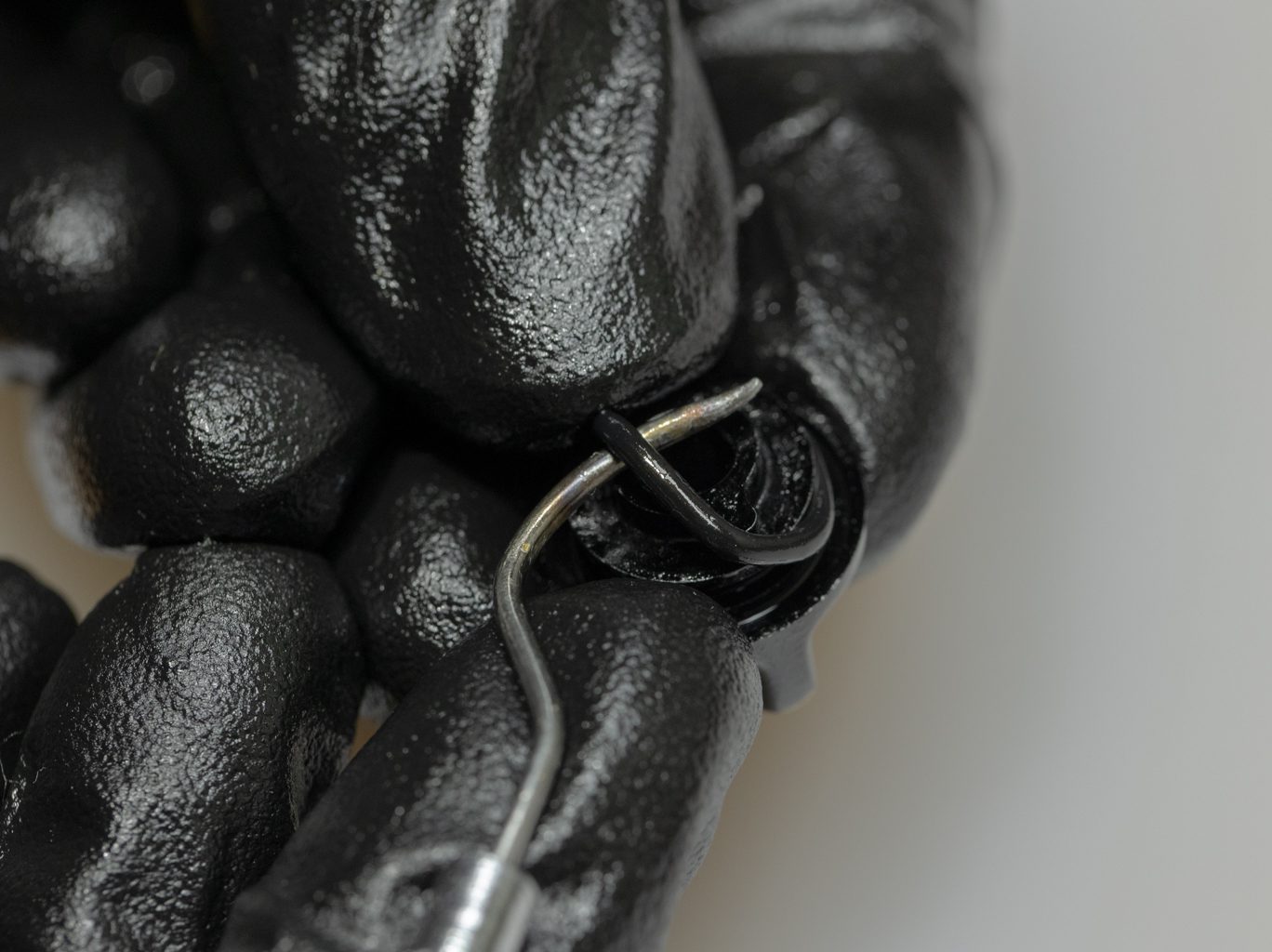

Step 6 – Adjuster Dials Removal
Using Kinipex, gently grab outside edges of High and Low Speed adjuster tabs and remove. Place rag over adjusters to protect them (not shown in photo). Pinch & remove and discard adjuster o-rings.

HSC Dial Removal

HSR Dial Removal

LSC Dial Removal

LSR Dial Removal

Dial O-Ring Removal 1

Dial O-Ring Removal 2





Step 7 – High Speed Adjuster Housing Removal
Using 8mm socket, remove high speed adjuster housing. Apply heat to aid removal.
***Note high speed adjuster housing may also be silver.***
TSB039 – Kitsuma High Speed Cap (ACD0275) Loctite Removal from Installation

8mm Socket for Adjuster Housing

Applying Heat to Adjuster Housing

Adjuster Housing Removal

HSR Adjuster Housing Removed

HSC Adjuster Housing Removed


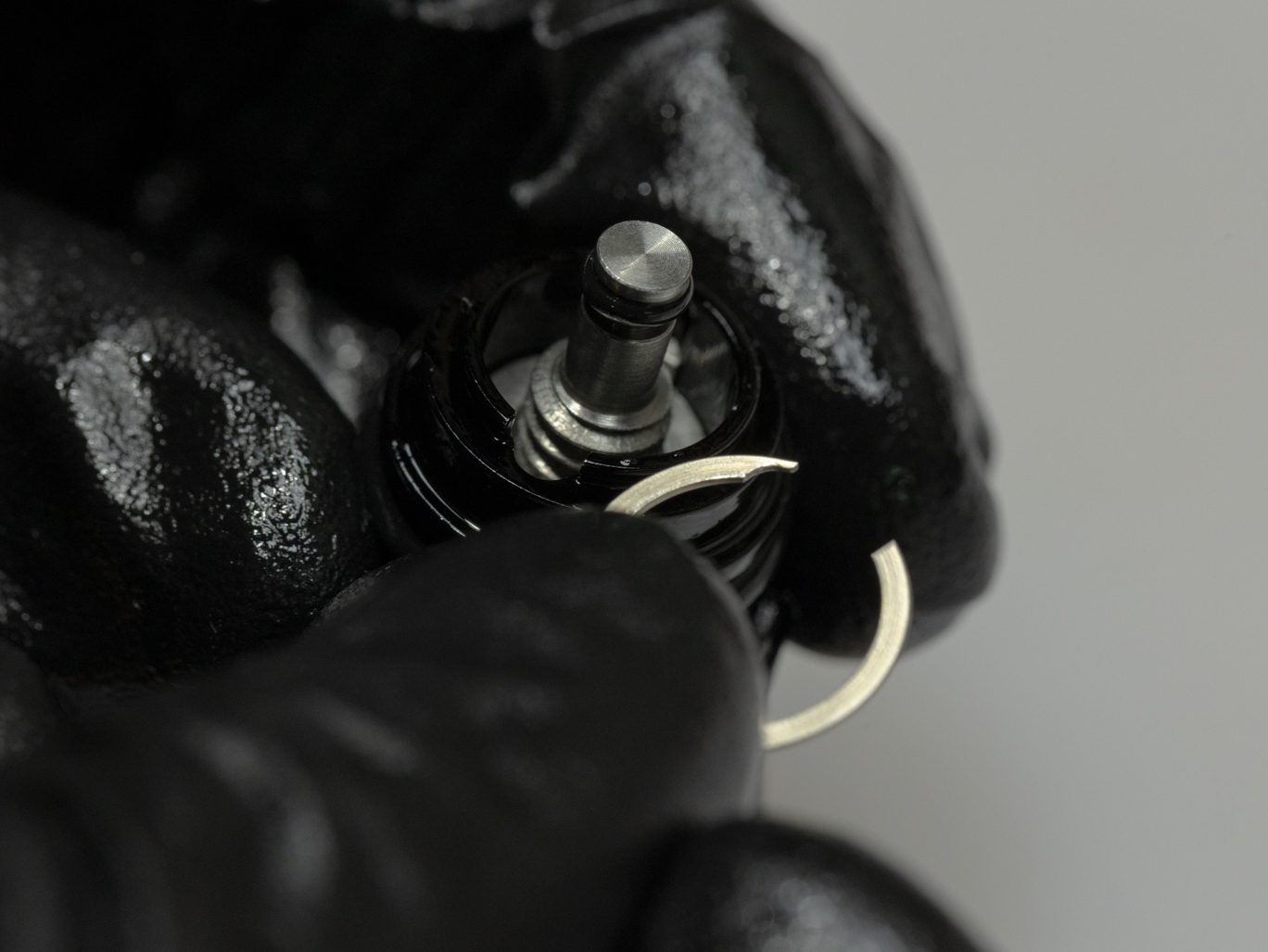
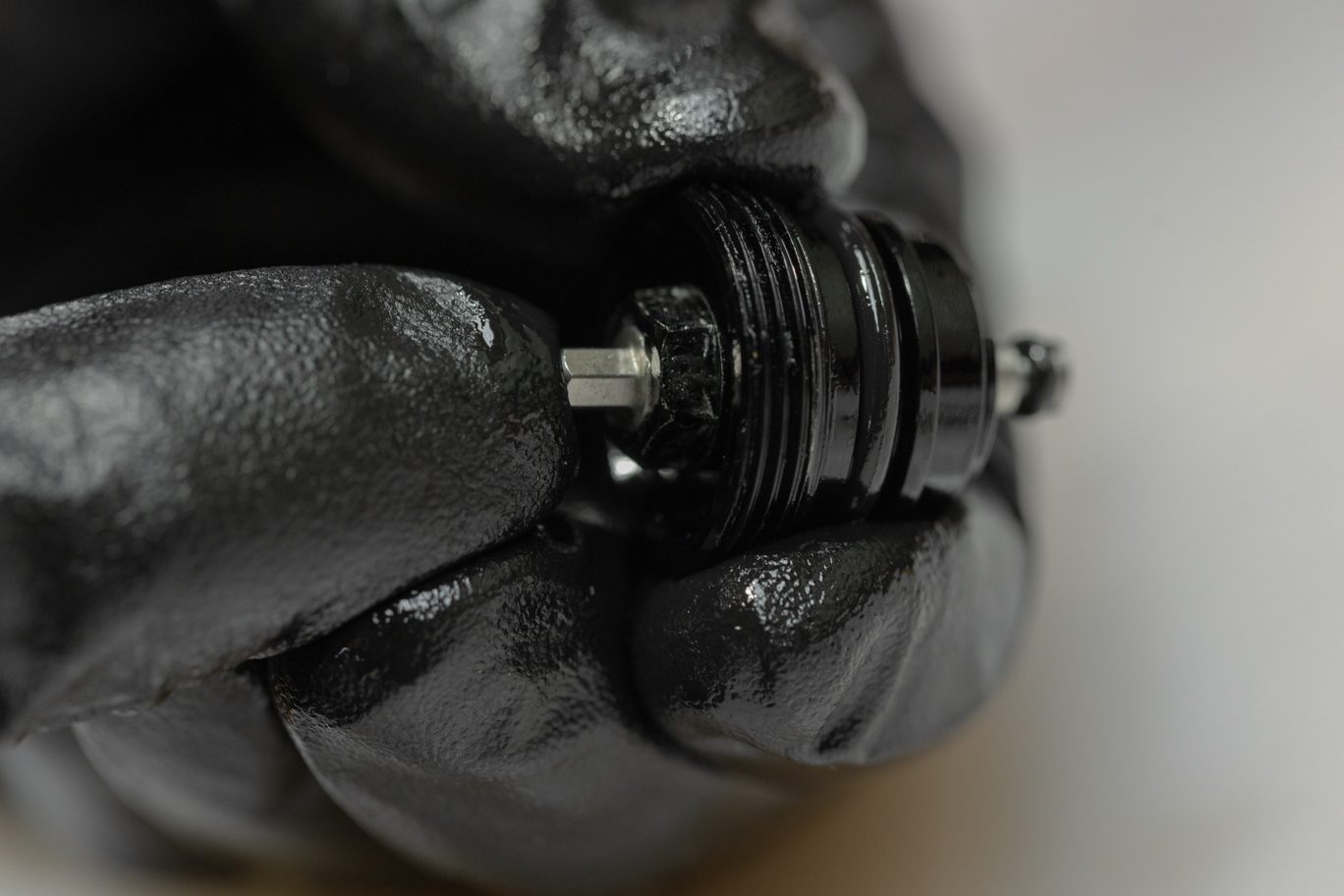


Step 8 – High Speed Adjuster Housing Disassembly
Disassemble high speed adjustors by removing poppet and spring. Remove circlip from housing and press adjustor out of housing. Pinch & remove and discard housing o-ring.

HS Housing Spring Removal

HS Housing Circlip Removal

HS Housing Circlip Removed

Removing Adjuster from Housing 1

Removing Adjuster from Housing 2

Removing O-Ring from Housing








Step 9 – Shuttle Disassembly
Press out detent spring and balls. Unthread shuttle, remove gold shim and remove both o-rings. Discard o-rings. Note the differences between the poppets and springs from the compression and rebound sides.
TSB038 – Kitsuma HSR Revalve

Detent Ball & Spring Removal

Unthreading Shuttle

Shuttle Shim Removal

Shuttle O-Ring Removal 1

Shuttle O-Ring Removal 2

Fully Disassembled Adjuster

Adjuster Poppet, Compression (L), Rebound (R)

Adjuster Spring, Compression (L), Rebound (R)
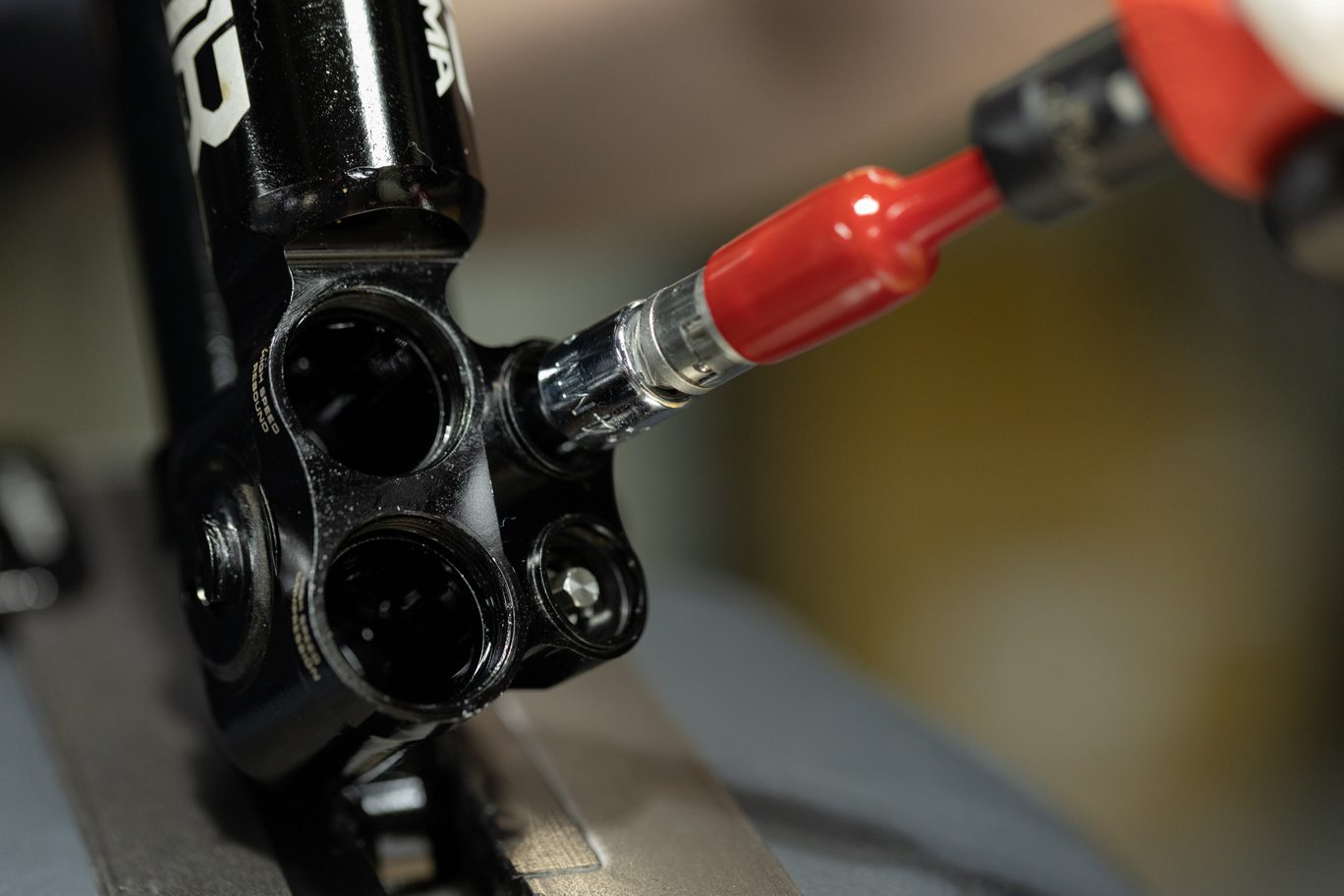

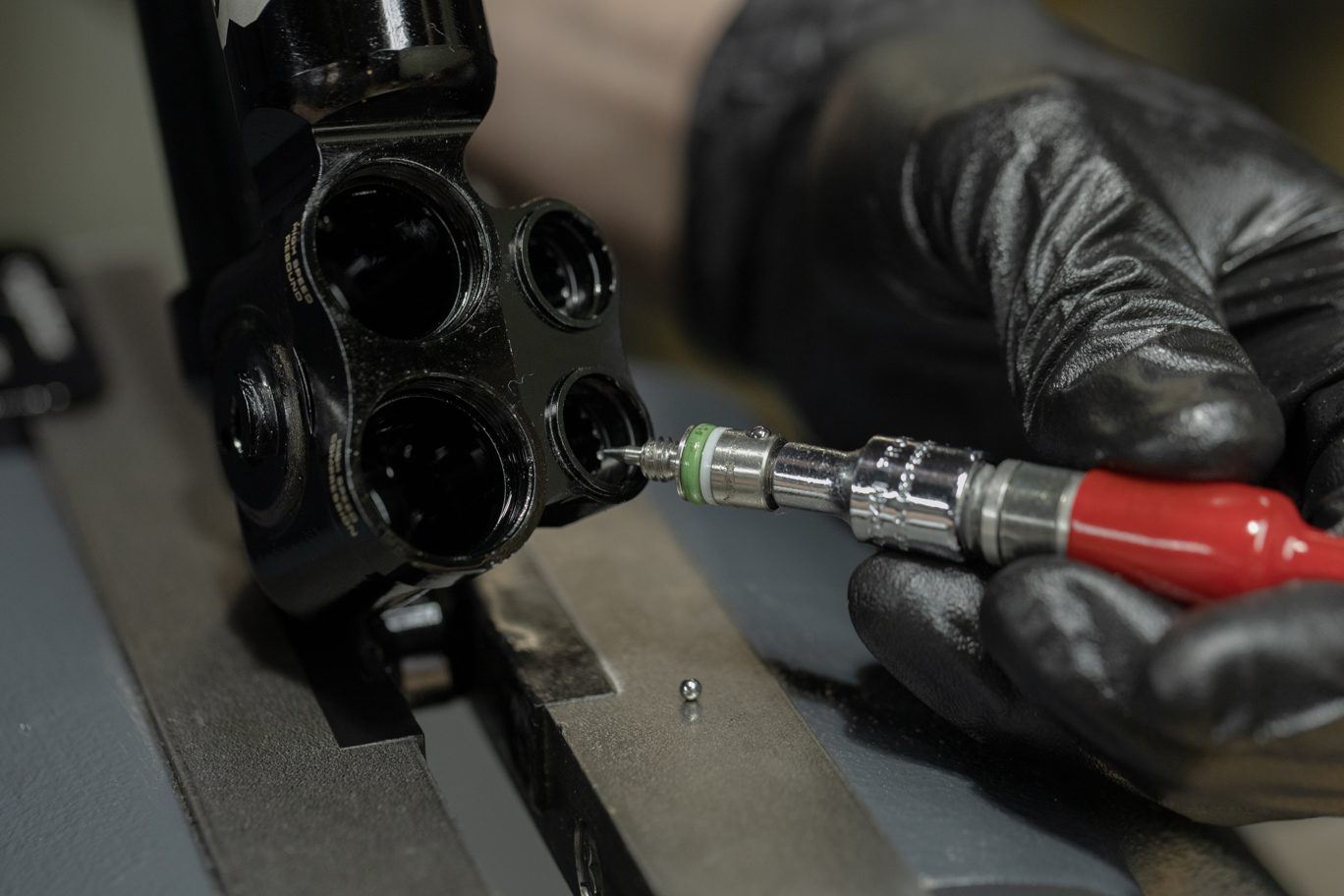




Step 10 – Low Speed Needles Removal
Using 4mm socket, unthread and remove the low speed needles. Press out detent spring and balls. Remove o-rings and back up rings and discard.

Low Speed Rebound Removal

Low Speed Rebound Removed

Low Speed Compression Removal

Low Speed Detent Spring & Balls Removal

Low Speed O-Ring Removal

Low Speed Back Up Ring Removal

Low Speed Detent Spring, Balls & O-Ring Removed
Continue to Part 2
Next
